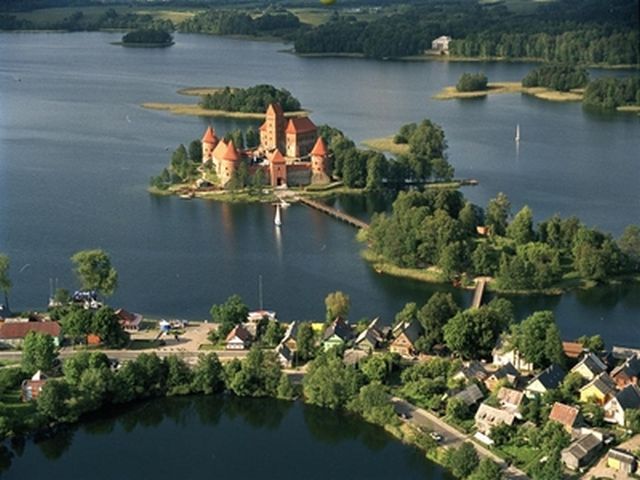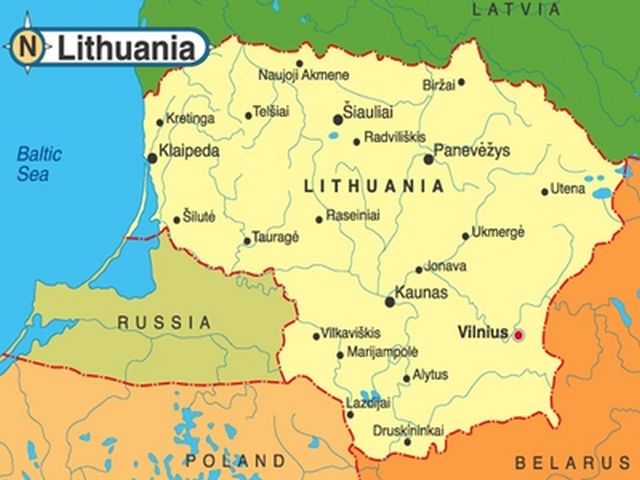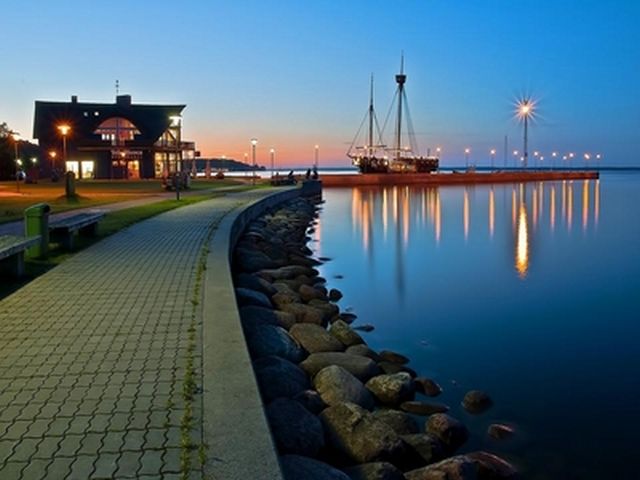A Few Words about Romania
Romania is a sovereign state located in Southeastern Europe. It borders the Black Sea, Bulgaria, Ukraine, Hungary, Serbia, and Moldova. It has an area of 238,391 square kilometres and a temperate-continental climate. With 19.94 million inhabitants, the country is the seventh most populous member state of the European Union. Its capital and largest city, Bucharest, is the sixth largest city in the EU. The River Danube, Europe’s second longest river, rises in Germany and flows southeastwards for a distance of 2,857 km, coursing through ten countries before emptying in Romania’s Danube Delta. The Carpathian Mountains, with their tallest peak Moldoveanu at 2,544 m, cross Romania from the north to the southwest. Modern Romania emerged within the territories of the ancient Roman province of Dacia, and was formed in 1859 through a personal union of the Danubian Principalities of Moldavia and Wallachia. The new state, officially named Romania since 1866, gained independence from the Ottoman Empire in 1877. At the end of World War I, Transylvania, Bukovina and Bessarabia united with the sovereign Kingdom of Romania. During World War II, Romania was an ally of Nazi Germany against the Soviet Union, fighting side by side with the Wehrmacht until 1944, when it then joined the Allied powers and faced occupation by the Red Army forces. Romania lost several territories, of which Northern Transylvania was regained after the war. Following the war, Romania became a socialist republic and member of the Warsaw Pact. After the 1989 Revolution, Romania began a transition back towards democracy and a capitalist market economy. Following rapid economic growth in the early 2000s, Romania has an economy predominantly based on services, and is a producer and net exporter of machines and electric energy, featuring companies like Automobile Dacia and OMV Petrom. It has been a member of NATO since 2004, and part of the European Union since 2007. A strong majority of the population identify themselves as Eastern Orthodox Christians and are native speakers of Romanian, a Romance language. With a rich cultural history, Romania has been the home of influential artists, musicians, inventors and sportspeople, and features a variety of tourist attractions.
Penelopa Stanca, teacher, "Constantin Noica" Theoretical High School Sibiu
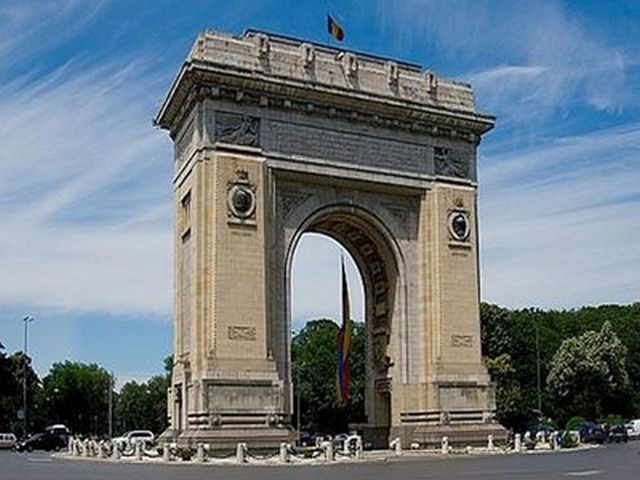
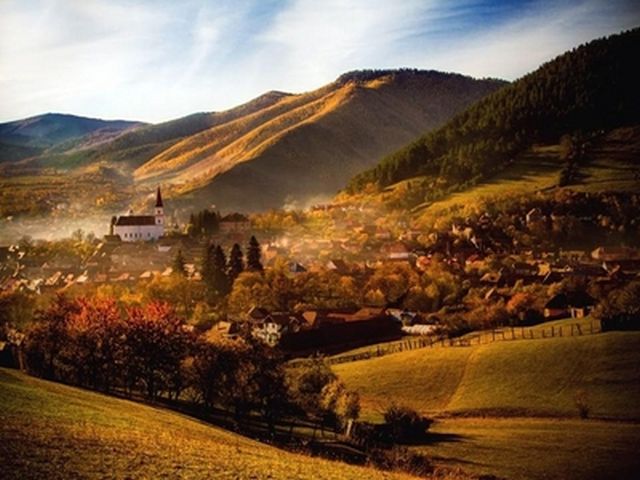
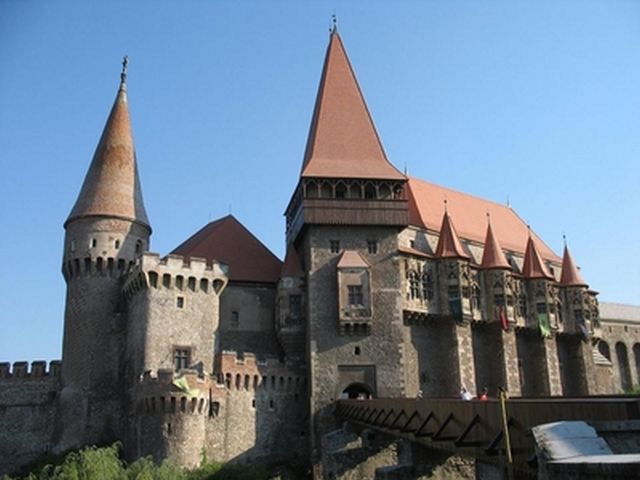
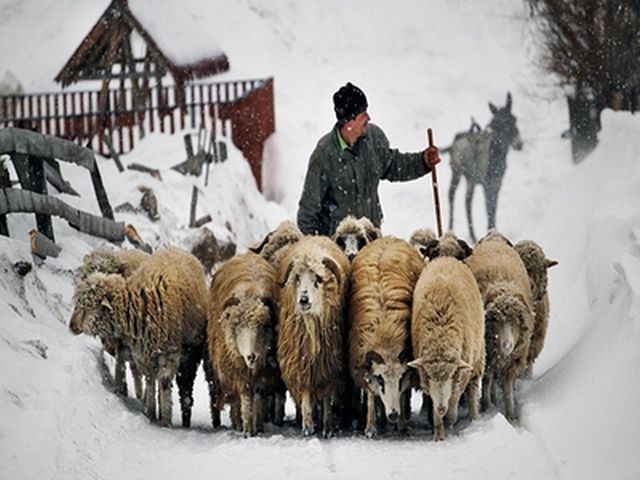
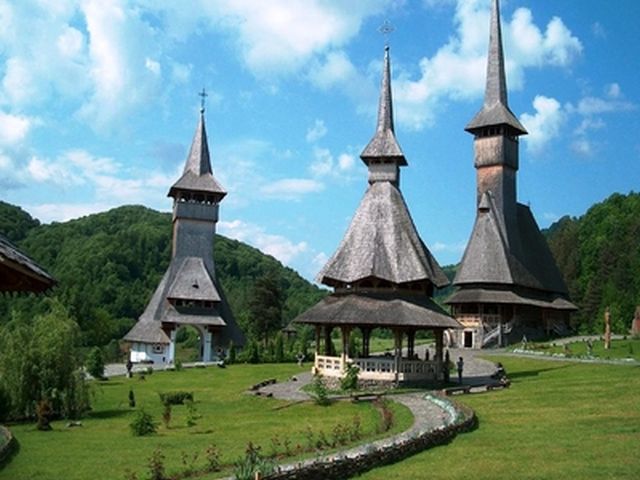
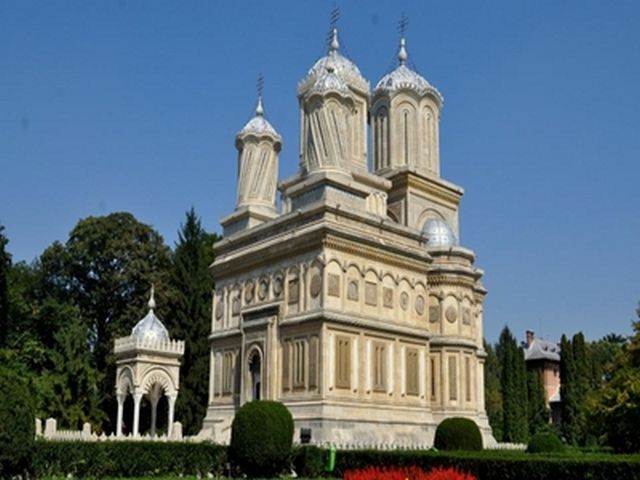
Câteva cuvinte despre România
România este un stat suveran situat în sud-estul Europei. Se învecinează cu Marea Neagră, Bulgaria, Ucraina, Ungaria, Serbia și Moldova. Aceasta are o suprafață de 238.391 kilometri pătrați și un climat temperat-continental. Cu 19,94 milioane de locuitori, țara este al șaptelea stat membru cel mai populat al Uniunii Europene. Capitala sa și cel mai mare oraș, București, este al șaselea oraș ca mărime din UE. Fluviul Dunărea, al doilea cel mai lung fluviu al Europei, izvorăște în Germania și curge, pe o distanta de 2,857 km, prin zece țări, înainte de vărsarea sa în Delta Dunării din România. Munții Carpați, cu cel mai înalt vârf al lor Moldoveanu, 2.544 m, traversează România de la nord spre sud-vest. România modernă a apărut în teritoriile provinciei romane antice din Dacia și s-a format în 1859, prin unirea Principatelor Dunărene ale Moldovei și Țării Românești. Noul stat, numit oficial România din anul 1866, și-a câștigat independența față de Imperiul Otoman în 1877. La sfârșitul primul război mondial, Transilvania, Bucovina și Basarabia s-au unit cu Regatul suveran al României. În timpul celui de-al doilea război mondial, România a fost un aliat al Germaniei naziste împotriva Uniunii Sovietice, luptând cot la cot până în 1944, când s-a alăturat apoi puterilor aliate și cu care a făcut față ocupației forțelor Armatei Roșii. România a pierdut mai multe teritorii, dintre care Transilvania de Nord a fost recăpătată după război. În urma războiului, România a devenit republică socialistă și membră a Pactului de la Varșovia. După Revoluția din 1989, România a început tranziția înapoi spre democrație și o economie de piață capitalistă. Ca urmare a creșterii economice rapide la începutul anilor 2000, România are o economie preponderent bazată pe servicii, și este un producător și exportator net de mașini și de energie electrică, furnizate de companii precum Automobile Dacia și OMV Petrom. Ea este membră NATO din 2004, și parte a Uniunii Europene începând cu anul 2007. O majoritate puternică a populației se identifică drept creștin-ortodoxă și locuitorii sunt vorbitori nativi de limba română, o limbă romanică. Cu o istorie culturală bogată, România a fost lăcașul unor artiști influenți, muzicieni, inventatori și sportivi, și oferă o varietate de atracții turistice.
Raluca Teglaș, profesor, Liceul Teoretic "Constantin Noica" Sibiu
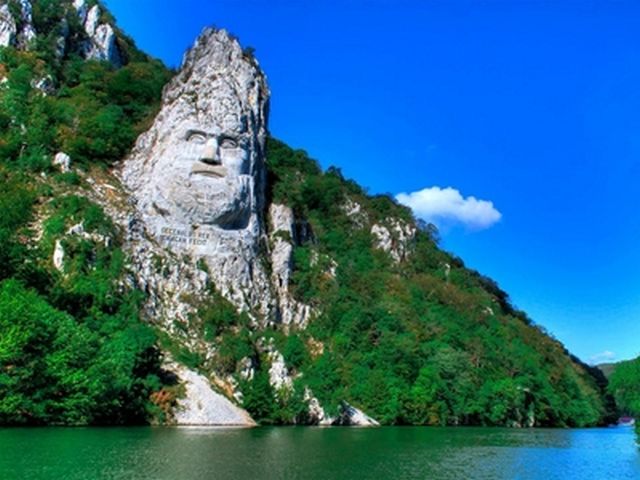
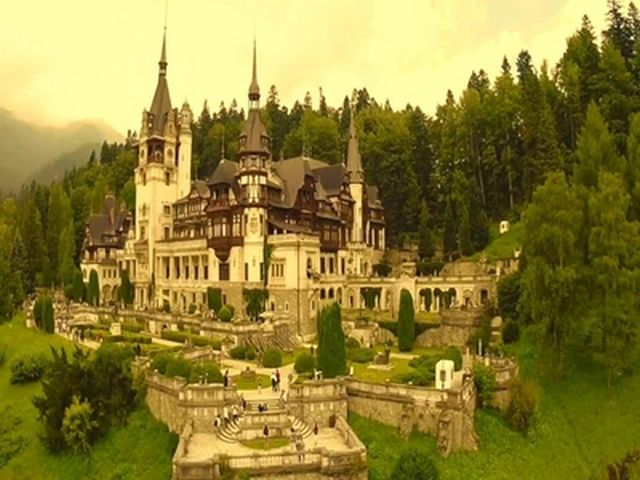
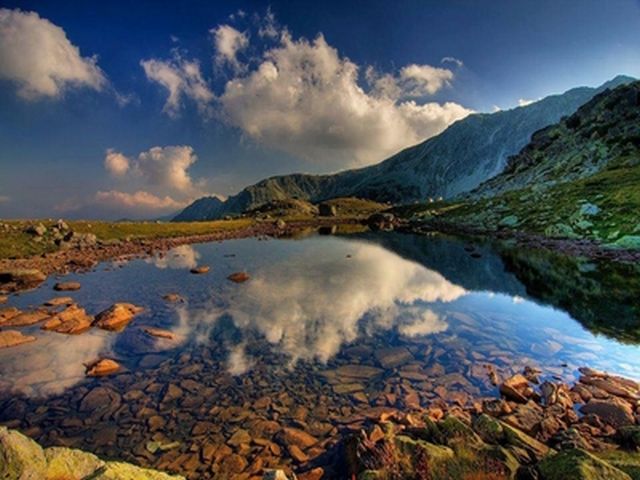
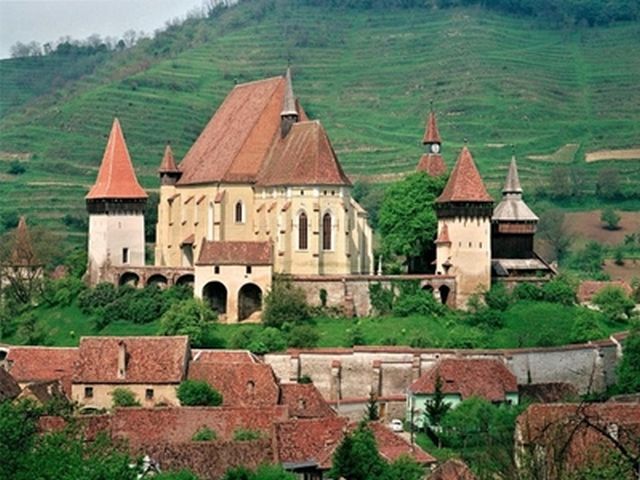
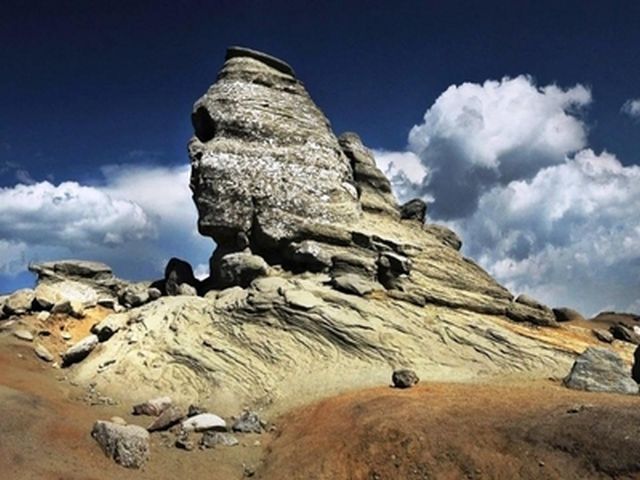
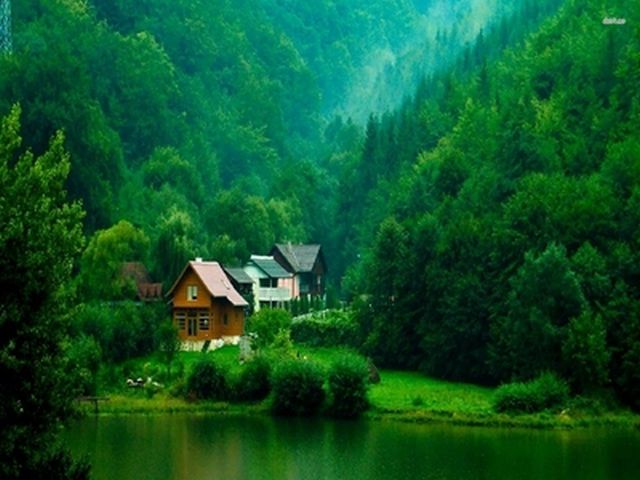
DESCRIPTION OF TURKEY
Turkey, officially the Republic of Turkey, is a transcontinental country in Eurasia, mainly on the Anatolian peninsula in Western Asia, with a smaller portion on the Balkan peninsula in Southeast Europe. Turkey is a democratic, secular, unitary, parliamentary republic with a diverse cultural heritage. Turkey is bordered by eight countries: Greece to the west; Bulgaria to the northwest; Georgia to the northeast; Armenia, the Azerbaijani exclave of Nakhchivan and Iran to the east; and Iraq and Syria to the south. The Aegean Sea is to the west, the Black Sea to the north, and the Mediterranean Sea to the south. The Bosphorus, the Sea of Marmara, and the Dardanelles, which together form the Turkish Straits, divide Thrace and Anatolia; they also separate Europe and Asia. Turkey's location between Europe and Asia has retained its geopolitical and strategic importance throughout history. In the mid-14th century the Ottomans started uniting Anatolia and created an empire encompassing much of Southeastern Europe, Western Asia and North Africa, becoming a major power in Eurasia and Africa during the early modern period. The empire reached the peak of its power in the 16th century, especially during the reign (1520–1566) of Suleiman the Magnificent. The empire remained powerful and influential for two more centuries, until important setbacks such as the Great Turkish War (1683–99) and the Russo-Turkish War (1768–74) forced it to cede strategic territories in Europe, signaling the loss of its former military strength and wealth. The Turkish War of Independence (1919-1922), initiated by Mustafa Kemal Atatürk and his colleagues in Anatolia against the occupying Allies, resulted in the abolition of monarchy in 1922 and the establishment of the modern Republic of Turkey in 1923, with Atatürk as its first president. Turkey's official language is Turkish, a Turkic language spoken natively by 84.5% of the population. According to the Address-Based Population Recording System of Turkey, the country's population was 78.7 million people in 2015, nearly three-quarters of whom lived in towns and cities. According to the 2015 estimate, the population is increasing by 1.35 percent each year. Turkey has an average population density of 97 people per km². People within the 15-64 age group constitute 67.4 percent of the total population; the 0-14 age group corresponds to 25.3 percent; while senior citizens aged 65 years or older make up 7.3 percent. In 1927, when the first official census was recorded in the Republic of Turkey, the population was 13.6 million. The largest city in Turkey, Istanbul, is also the third largest city in Europe in population, and the third-largest city in Europe in terms of size. The most popular sport in Turkey is association football (soccer). Galatasaray won the UEFA Cup and UEFA Super Cup in 2000. The Turkish national football team finished 3rd and won the bronze medal at the 2002 FIFA World Cup and at the 2003 FIFA Confederations Cup; while also reaching the semi-finals (finishing 3rd by goals difference) at the UEFA Euro 2008. Turkish cuisine is regarded as one of the most prominent in the world, its popularity is largely owed to the cultural influences of the Ottoman Empire and partly because of its major tourism industry. It is largely the heritage of Ottoman cuisine, which can be described as a fusion and refinement of Central Asian, Caucasian, Middle Eastern, Mediterranean and Balkan cuisines. Tourism in Turkey has experienced rapid growth in the last twenty years, and constitutes an important part of the economy. The Turkish Ministry of Culture and Tourism currently promotes Turkish tourism under the Turkey Home name. In 2014, 37.8 million foreign visitors arrived in Turkey, which ranked as the 6th most popular tourism destination in the world; they contributed $27.9 billion to Turkey's revenues. In 2012, 15 percent of the tourists were from Germany, 11 percent from Russia, 8 percent from the United Kingdom, 5 percent from Bulgaria, 4 percent each from Georgia, the Netherlands and Iran, 3 percent from France, 2 percent each from the United States and Syria, and 40 percent from other countries. Turkey hosts two of the Seven Wonders of the Ancient World: The Mausoleum in Halicarnassus and the Temple of Artemis in Ephesus.
Enes Bulut, pupil, Vali Mehmet Lutfullah Bilgin Ortaokulu
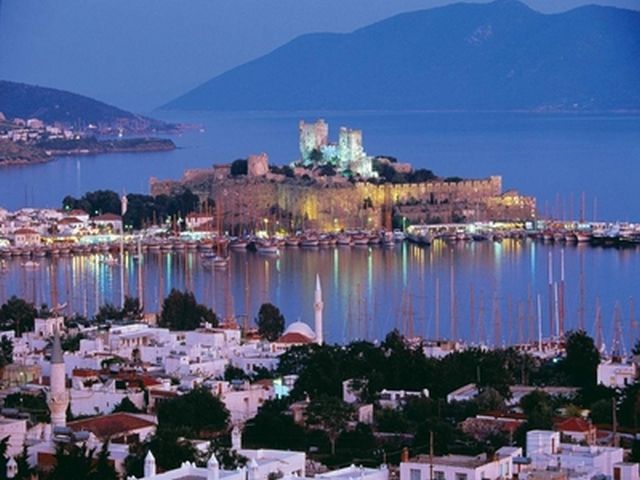
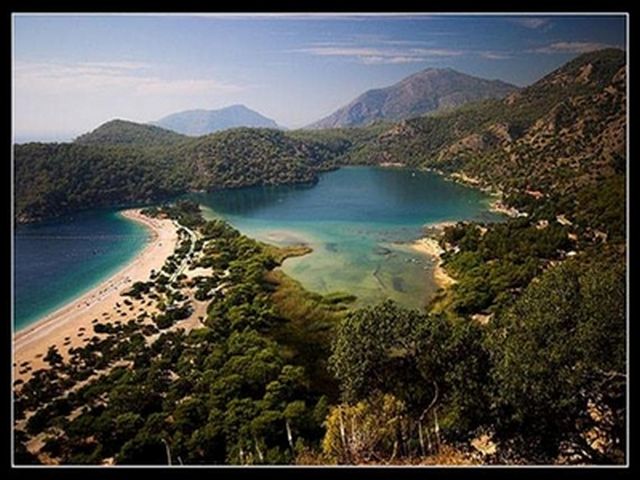
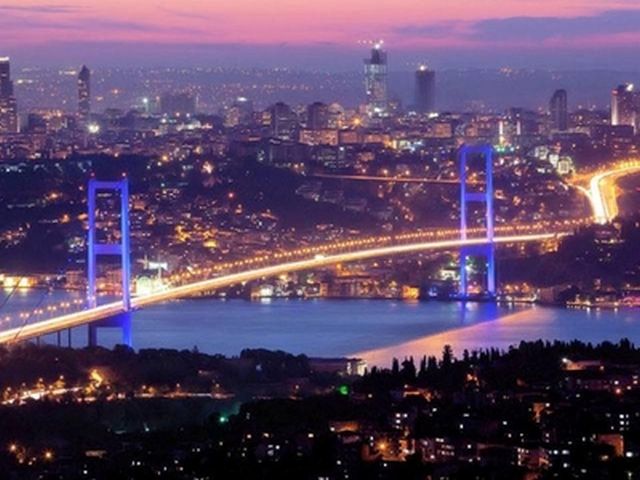
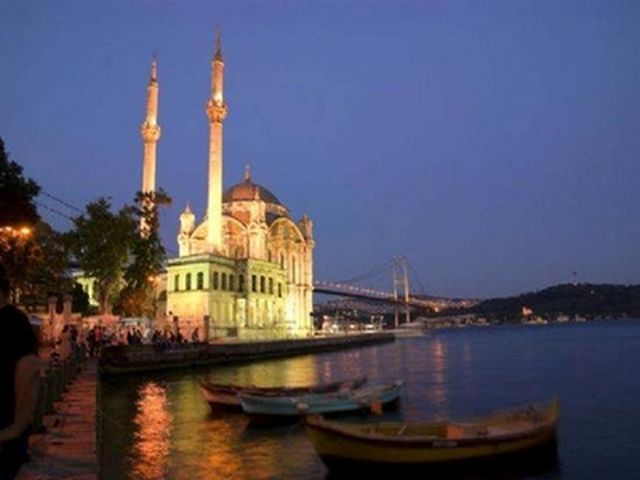
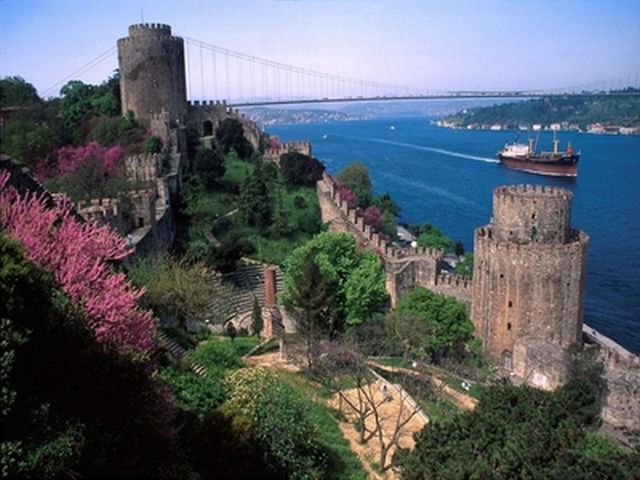
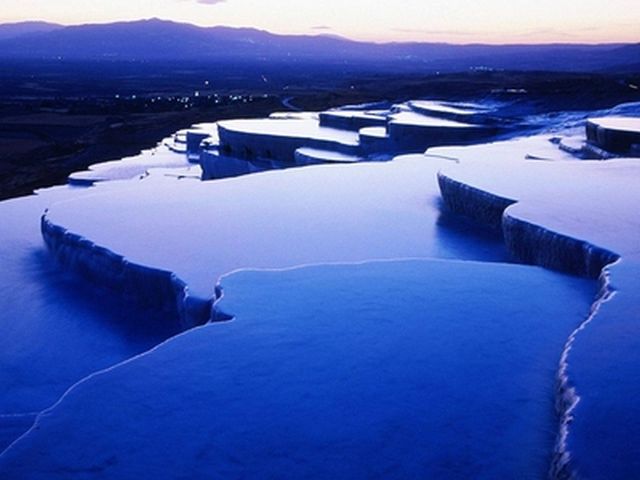
TÜRKİYE TANITIMI
Türkiye ya da resmî adıyla Türkiye Cumhuriyeti, topraklarının büyük bölümü Anadolu'ya, küçük bir bölümü ise Balkanlar'ın uzantısı olan Trakya'ya yayılmış bir ülkedir. Kuzeybatıda Bulgaristan, batıda Yunanistan, kuzeydoğuda Gürcistan, doğuda Ermenistan, İran ve Azerbaycan'ın ekslav toprağı Nahçıvan, güneydoğuda ise Irak ve Suriye komşusudur. Güneyini Akdeniz, batısını Ege Denizi ve kuzeyini Karadeniz çevreler. Marmara Denizi ise İstanbul Boğazı ve Çanakkale Boğazı ile birlikte Anadolu'yu Trakya'dan yani Asya'yı Avrupa'dan ayırır. Türkiye, Avrupa ve Asya'nın kavşak noktasında yer alması sayesinde önemli bir jeostratejik güce sahiptir. 14. yüzyılın ortalarından itibaren Osmanlılar, Anadolu'nun yanı sıra Güneydoğu Avrupa, Batı Asya ve Kuzey Afrika üzerinde toprakları bulunan büyük bir imparatorluk kurarak erken modern dönemde Avrasya ve Afrika'nın büyük bir gücü oldu. İmparatorluk zirvesini 15. ve 17. yüzyıllar arasında, özelikle I. Süleyman döneminde yaşadı. 1683 II. Viyana Kuşatması ve 1699 Kutsal İttifak Savaşları sonrasında Türklerin Avrupa topraklarından çekilişi başladı ve Osmanlı İmparatorluğu uzun bir gerileme dönemi yaşadı. İşgalci kuvvetlere karşı yapılan Kurtuluş Savaşı (1919-22) başarıya ulaştıktan sonra Mustafa Kemal Atatürk tarafından 1923'te Türkiye Cumhuriyeti kuruldu. Atatürk ilk cumhurbaşkanı seçildi. Resmî dili, nüfusun %85'inin ana dili olan Türkçedir. Adrese Dayalı Nüfus Kayıt Sistemi sonucunda elde edilen verilere göre 31 Aralık 2015 itibarıyla Türkiye'nin nüfusu 78.7 milyondur. Nüfusun yaklaşık ¾'ü kasaba ve köylerde yaşamaktadır. 2015 verilerine göre, nüfus her yıl %1,35 oranında artmaktadır. Yine aynı verilere göre Türkiye'de km² başına ortalama 97 kişi düşmektedir. Nüfusun %67,4'ü 15-64 yaş grubunda yer alırken; %25,3'ü 0-14 yaş grubunda yer almaktadır. Yaklaşık %7,3'lük bir kısım ise 65 ve üstü yaşlardaki kişilerden oluşmaktadır. İlk resmî nüfus sayımının yapıldığı 1927 yılında, ülke nüfusu 13.6 milyondu. Türkiye'nin en gelişmiş ve en kalabalık şehri İstanbul'dur. Ayrıca Avrupa'nın en kalabalık üçüncü şehri unvanını da taşımaktadır. Türkiye'de en çok sevilen sporlardan biri futboldur. Futbol ligler halinde oynanmakta ve bunların en büyüğü Süper Lig'dir. Lig şampiyonu olabilmiş olan takımların üçü (Beşiktaş, Fenerbahçe ve Galatasaray) İstanbul takımı, iki tanesi (Trabzonspor) ve (Bursaspor) ise Anadolu takımıdır. Futbol kulüpleri Türkiye Futbol Federasyonu çatısı altında toplanmıştır. Galatasaray Avrupa'da kupa kazanan ilk ve tek Türk futbol takımıdır. 2000 yılında UEFA Kupası ve UEFA Süper Kupa'yı kazanmıştır. Türkiye Millî Futbol Takımı 2000 Avrupa Futbol Şampiyonasında 6., 2002 FIFA Dünya Kupası'nda, 2003 FIFA Konfederasyonlar Kupası'nda ve 2008 Avrupa Futbol Şampiyonasında 3. olmuştur. Türk mutfağı dünyanın en zengin mutfaklarından biridir. Türk mutfağı, Çin ve Fransız mutfaklarıyla beraber dünyanın en zengin mutfaklarındandır. Coğrafyası ve tarihi gereği, Türk mutfağı çok büyük bir çeşitlilik oluşturur. Türk mutfağı, Mezopotamya ve Balkan mutfaklarıyla etkileşime girmiştir, İstanbul Osmanlı Saray mutfağı da Türk mutfağının önemli bir kısmını oluşturur. Türkiye'de turizm, ekonominin önemli bir kısmını teşkil etmektedir ve son yirmi yılda hızlı bir büyüme yakalamıştır. 2014'te 39,8 milyon turist tarafından ziyaret edilen Türkiye, Dünyanın 6., Avrupa'nın 4. en büyük turizm destinasyonu olarak yer almış ve ziyaretçilerden 29,5 milyar dolar gelir elde etmiştir. 2012 yılında, gelen turistlerin %15'ini Almanlar, %11'ini Ruslar, %8'ini İngilizler, %5'ini Bulgarlar, %4'ünü Gürcüler, Hollandalılar ve İranlılar, %3'ünü Fransızlar, %2'sini Amerikalı ve Suriyeliler ve %40'ını diğer ülkeler oluşturmuştur. Türkiye dünyanın yedi harikasından ikisine ev sahipliği yapmaktadır. Bunlar, ‘Halikarnas Mozolesi' ve ‘Artemis Tapınağı'dır.
Imran Durak, öğrenci, Vali Mehmet Lutfullah Bilgin Ortaokulu
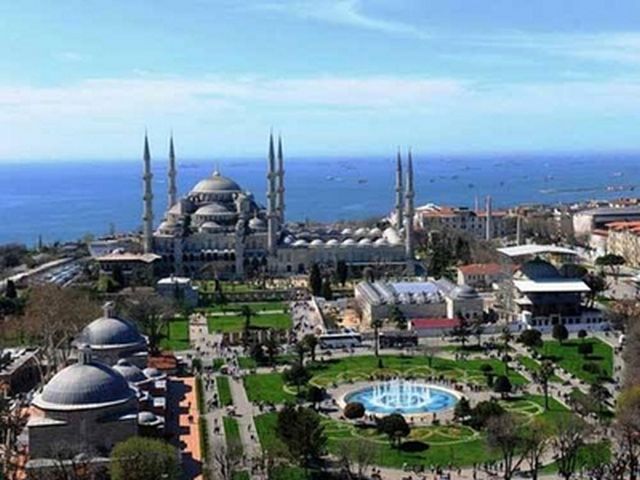
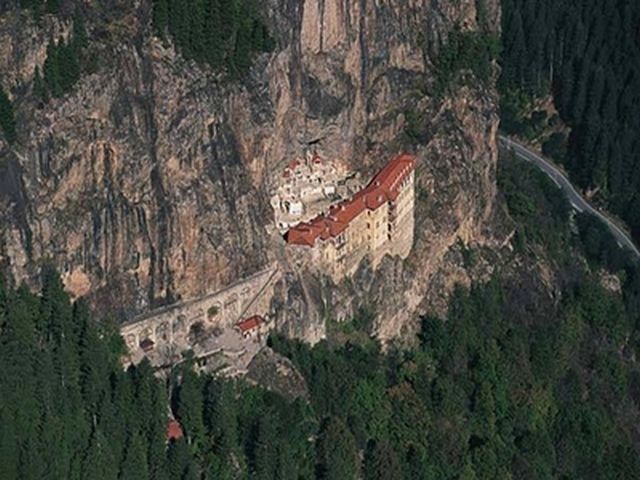
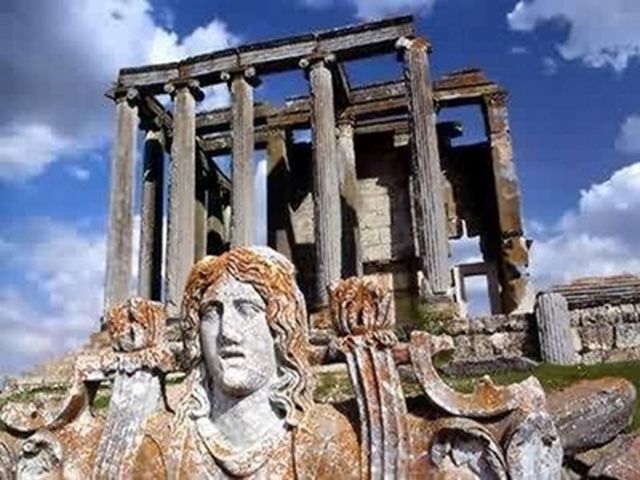
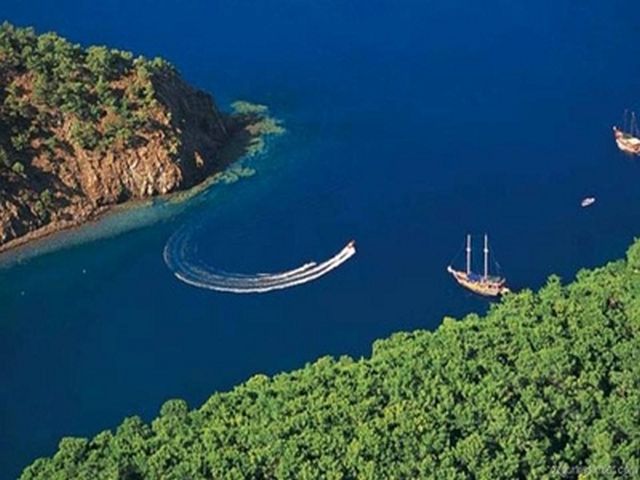
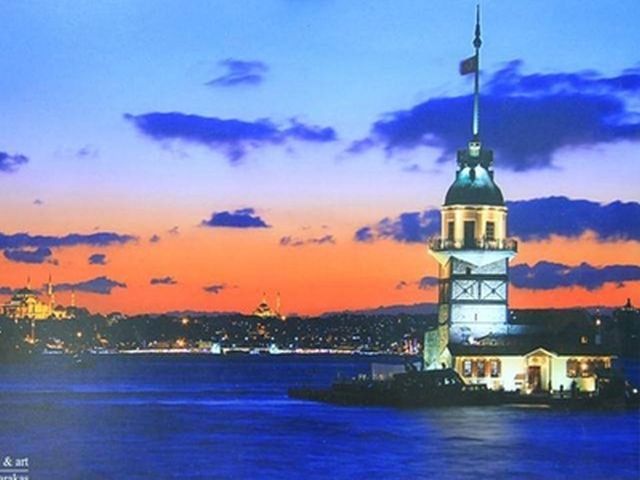
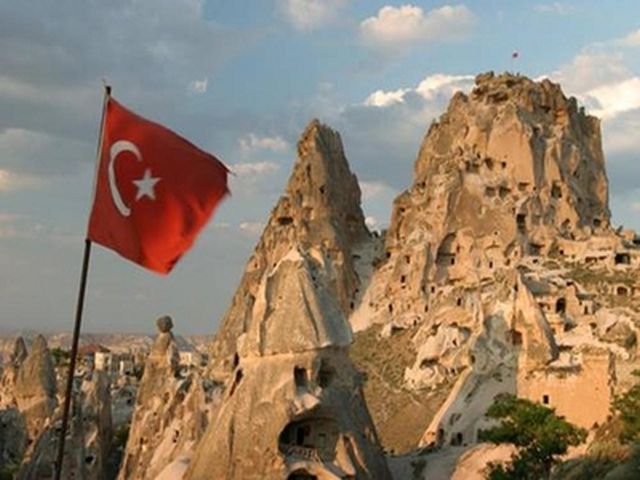
A First Description of Portugal
Portugal, officially the Portuguese Republic, is a unitary sovereign country located in southwestern Europe, whose territory lies in the western part of the Iberian Peninsula and in archipelagos in the North Atlantic. The Portuguese territory has a total area of 92,090 km², being delimited to the north and east by Spain and to the south and west by the Atlantic Ocean, comprising a continental part and two autonomous regions: the archipelagos of the Azores and Madeira. Portugal is the westernmost nation on the European continent. The name of the country comes from its second largest city, Port, whose Latin-Celtic name was Portus Cale. The territory within the current borders of the Portuguese Republic has been continuously populated since prehistoric times: occupied by Celts, like the Galicians and Lusitanians, was integrated into the Roman Republic and later colonized by Germanic peoples, such as the Suevi and the Visigoths. In the eighth century, the lands were conquered by the Moors. During the Christian Reconquest the Portucalense County was formed, first as part of the Kingdom of Galicia and later integrated into the Kingdom of Leon. With the establishment of the Kingdom of Portugal in 1139, whose independence, it was recognized in 1143. In 1297 the boundaries were defined in the treaty of Alcanizes, making Portugal the oldest nation-state in Europe. In the 15th and 16th centuries, as a result of pioneerism in the Age of Discoveries (see: Portuguese discoveries), Portugal expanded Western influence and established an empire that included possessions in Africa, Asia, Oceania and South America, becoming the economic power, the most important political and military in the world. The Portuguese Empire was the first global empire of history and enduring of the European colonial empires, covering almost 600 years of existence, from the conquest of Ceuta in 1415, until the transfer of sovereignty of Macao to the China in 1999. However, the country's international importance was greatly reduced during the nineteenth century, especially after independence from Brazil, its largest colony. With the Revolution of 1910, the monarchy finished, having from 1139 to 1910, 34 monarchs. The First Portuguese Republic was very unstable due to the high parliamentarism. The regime gave way to the military dictatorship due to a survey on May 28, 1926. In 1933, a new authoritarian regime, Estado Novo, presided over by Salazar until 1968, managed the country until April 25, 1974. Representative democracy was established after the Carnation Revolution in 1974, which ended the Portuguese Colonial War. The overseas provinces of Portugal have become independent, with Angola and Mozambique being the most prominent. Portugal is a developed country, with a Human Development Index (HDI) considered as very high. The country ranked 19th in quality of life (2005), has one of the best health systems on the planet and is also one of the most globalized and peaceful nations in the world. It is a member of the United Nations (UN), the European Union (including the Eurozone and the Schengen Area), the North Atlantic Treaty Organization (NATO), the Organization for Economic Co-operation and Development (OECD) Of Portuguese Speaking Countries (CPLP). Portugal also participates in several United Nations peacekeeping missions.
Paulo Almeida, headmaster, Agrupamento de Escolas Fernando Casimiro Pereira da Silva
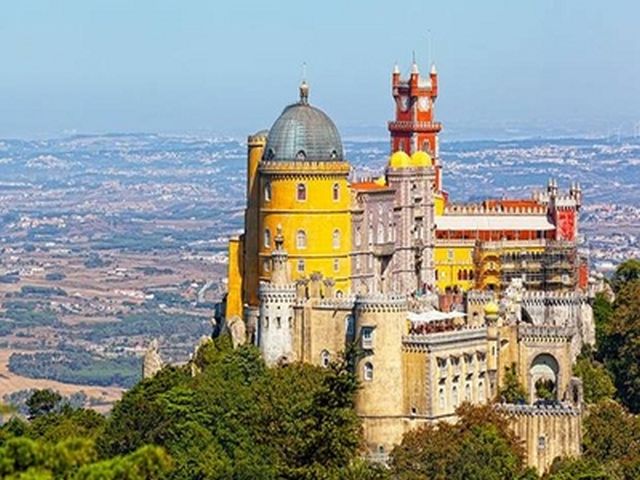
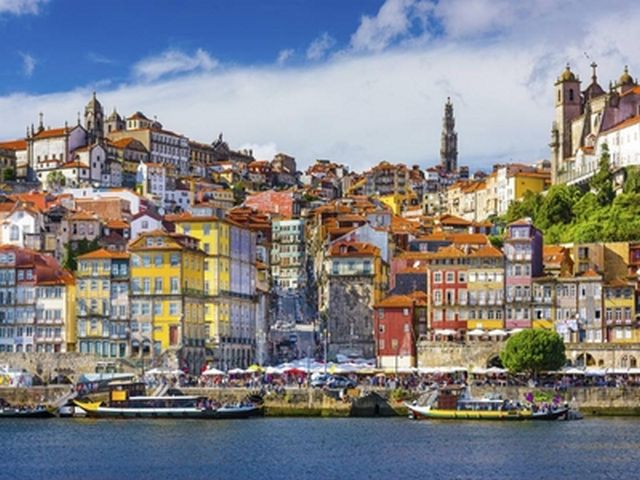
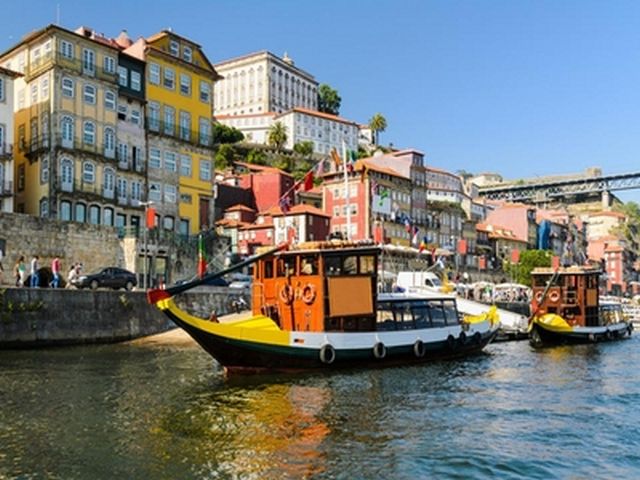
Primeira descrição de Portugal
Portugal, oficialmente República Portuguesa, é um país soberano unitário localizado no sudoeste da Europa, cujo território se situa na zona ocidental da Península Ibérica e em arquipélagos no Atlântico Norte. O território português tem uma área total de 92 090 km², sendo delimitado a norte e leste por Espanha e a sul e oeste pelo oceano Atlântico, compreendendo uma parte continental e duas regiões autónomas: os arquipélagos dos Açores e da Madeira. Portugal é a nação mais a ocidente do continente europeu. O nome do país provém da sua segunda maior cidade, Porto, cujo nome latino-celta era Portus Cale. O território dentro das fronteiras atuais da República Portuguesa tem sido continuamente povoado desde os tempos pré-históricos: ocupado por celtas, como os galaicos e os lusitanos, foi integrado na República Romana e mais tarde colonizado por povos germânicos, como os suevos e os visigodos. No século VIII, as terras foram conquistadas pelos mouros. Durante a Reconquista cristã foi formado o Condado Portucalense, primeiro como parte do Reino da Galiza e depois integrado no Reino de Leão. Com o estabelecimento do Reino de Portugal em 1139, cuja independência foi reconhecida em 1143. Em 1297 foram definidas as fronteiras no tratado de Alcanizes, tornando Portugal no mais antigo Estado-nação da Europa. Nos séculos XV e XVI, como resultado de pioneirismo na Era dos Descobrimentos (ver: descobrimentos portugueses), Portugal expandiu a influência ocidental e estabeleceu um império que incluía possessões na África, Ásia, Oceânia e América do Sul, tornando-se a potência económica, política e militar mais importante de todo o mundo. O Império Português foi o primeiro império global da História e também o mais duradouro dos impérios coloniais europeus, abrangendo quase 600 anos de existência, desde a conquista de Ceuta em 1415, até à transferência de soberania de Macau para a China em 1999. No entanto, a importância internacional do país foi bastante reduzida durante o século XIX, especialmente após a independência do Brasil, a sua maior colónia. Com a Revolução de 1910, a monarquia terminou, tendo desde 1139 até 1910, 34 monarcas. A Primeira República Portuguesa foi muito instável, devido ao elevado parlamentarismo. O regime deu lugar à ditadura militar devido a um levantamento em 28 de maio de 1926. Em 1933, um novo regime autoritário, o Estado Novo, presidido por Salazar até 1968, geriu o país até 25 de abril de 1974. A democracia representativa foi instaurada após a Revolução dos Cravos, em 1974, que terminou a Guerra Colonial Portuguesa. As províncias ultramarinas de Portugal tornaram-se independentes, sendo as mais proeminentes Angola e Moçambique. Portugal é um país desenvolvido, com um Índice de Desenvolvimento Humano (IDH) considerado como muito elevado. O país foi classificado na 19.ª posição em qualidade de vida (em 2005), tem um dos melhores sistemas de saúde do planeta e é, também, uma das nações mais globalizadas e pacíficas do mundo. É membro da Organização das Nações Unidas (ONU), da União Europeia (incluindo a Zona Euro e o Espaço Schengen), da Organização do Tratado do Atlântico Norte (NATO), da Organização para a Cooperação e Desenvolvimento Económico (OCDE) e da Comunidade dos Países de Língua Portuguesa (CPLP). Portugal também participa em diversas missões de manutenção de paz das Nações Unidas.
Célia Pereira, professor, Agrupamento de Escolas Fernando Casimiro Pereira da Silva
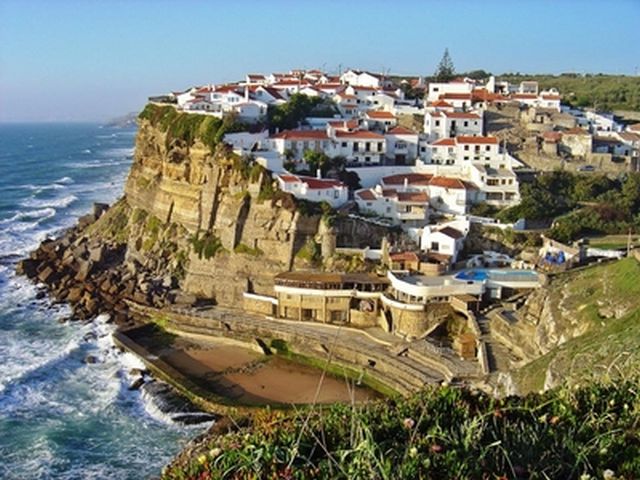
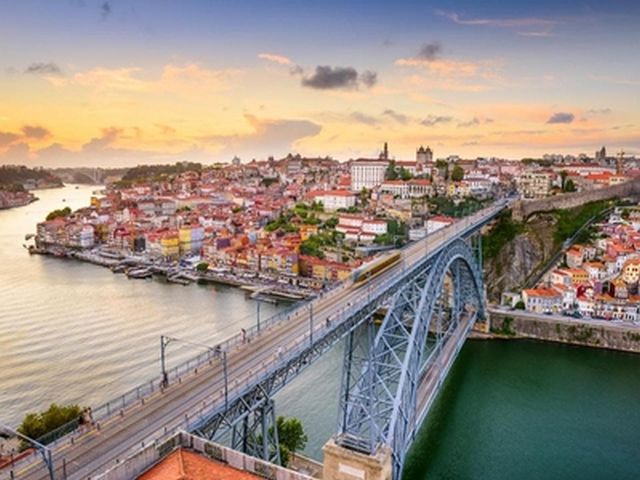
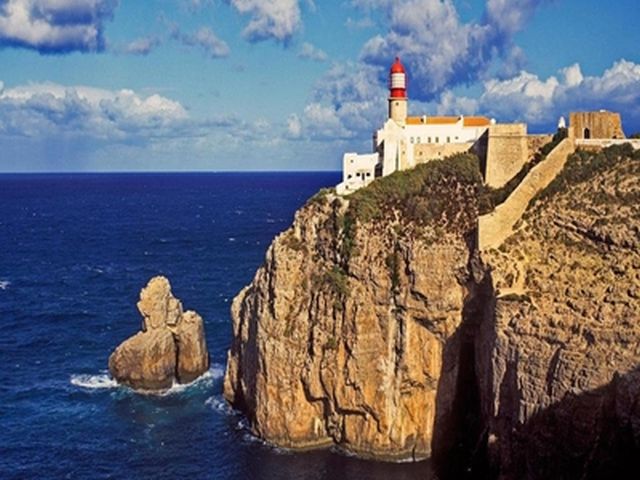
The Republic of Croatia
The Republic of Croatia is a sovereign state between Central Europe, Southeast Europe, and the Mediterranean. Its capital city is Zagreb, which forms one of the country's primary subdivisions, along with its 20 counties. Croatia covers 56,594 square kilometres (21,851 square miles) and has varied, mostly continental and Mediterranean climates. Croatia's Adriatic Sea coast has over a thousand islands. The country's population is 4.28 million, most Croats, with the most common religious denomination being Roman Catholicism. The Croats arrived in the area of present-day Croatia during the early part of the 7th century AD. They organised the state into 2 duchies by the 9th century. Tomislav became the first king by 925, elevating Croatia to the status of a kingdom. The Kingdom of Croatia retained its sovereignty for nearly 2 centuries, reaching its peak during the rule of Kings Petar Krešimir IV and Dmitar Zvonimir. Croatia entered a personal union with Hungary in 1102. In 1527, faced with Ottoman conquest, the Croatian Parliament elected Ferdinand I of the House of Habsburg to the Croatian throne. In 1918, after World War I, Croatia was included in the unrecognized State of Slovenes, Croats and Serbs which seceded from Austria-Hungary and merged into the Kingdom of Yugoslavia. The fascist Croatian puppet state backed by Fascist Italy and Nazi Germany existed during World War II. After the war, Croatia became a founding member and a federal constituent of the Socialist Federal Republic of Yugoslavia, a constitutionally socialist state. On 25 June 1991 Croatia declared independence, which came wholly into effect on 8 October, the same year. The Croatian War of Independence was fought successfully during the 4 years following the declaration. A unitary state, Croatia is a republic governed under a parliamentary system. The International Monetary Fund classified Croatia as an emerging and developing economy, and the World Bank identified it as a high-income economy. Croatia is a member of the European Union (EU), United Nations (UN), the Council of Europe, NATO, the World Trade Organization (WTO) and a founding member of the Union for the Mediterranean. As an active participant in the UN peacekeeping forces, Croatia has contributed troops to the NATO-led mission in Afghanistan and took a non-permanent seat on the UN Security Council for the 2008-2009 term. The service sector dominates Croatia's economy, followed by the industrial sector and agriculture. Tourism is a significant source of revenue during the summer, with Croatia ranked the 18th most popular tourist destination in the world. The state controls a part of the economy, with substantial government expenditure. The European Union is Croatia's most important trading partner. Since 2000, the Croatian government constantly invests in infrastructure, especially transport routes and facilities along the Pan-European corridors. Internal sources produce a significant portion of energy in Croatia; the rest is imported. Croatia provides a universal health care system and free primary and secondary education, while supporting culture through numerous public institutions and corporate investments in media and publishing.
Valerija Horvat, teacher, l. osnovna skola Cakovec
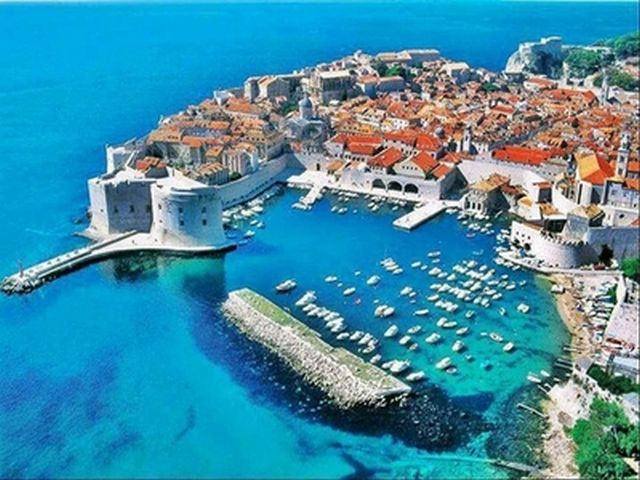
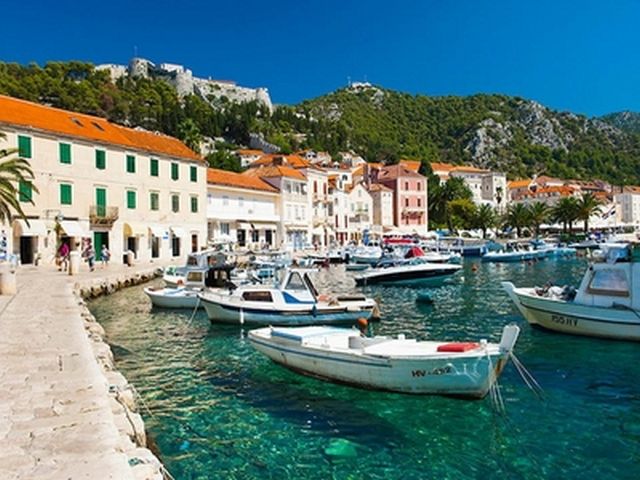
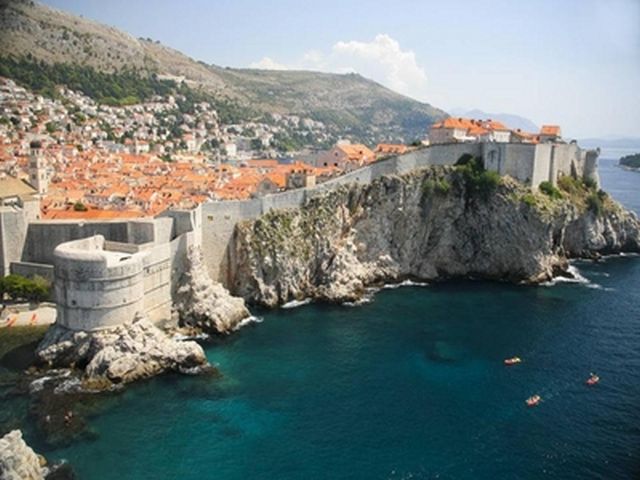
Republika Hrvatska
Republika Hrvatska je suverena država između srednje Europe, jugoistočne Europe i Mediterana. Njegov glavni grad je Zagreb koji predstavlja jedan od primarnih podvrstama u zemlji, zajedno sa svojim dvadeset županija. Hrvatska pokriva 56,594 četvornih kilometara (21,851 četvornih milja) i ima različite, uglavnom kontinentalna i mediteranska klima. Hrvatska Jadransko more sadrži više od tisuću otoka. stanovništva zemlje je 4,28 milijuna, od kojih su većina Hrvati, s najčešćim vjeroispovijesti bude katolicizam. Hrvati su stigli u područje današnje Hrvatske u ranom dijelu 7. stoljeću. Oni su organizirali stanje u dvije vojvodstava od 9. stoljeća. Tomislav je postao prvi kralj od 925., uzdižući Hrvatsku na status kraljevstva. Kraljevina Hrvatska zadržala svoj suverenitet gotovo dva stoljeća, dostižući svoj vrhunac tijekom vladavine kraljeva Petra Krešimira IV i Dmitra Zvonimira. Hrvatska ušla u personalnu uniju s Ugarskom u 1102. U 1527, suočen s turskih osvajanja, Hrvatski sabor izabran je Ferdinand I. Habsburgovaca na hrvatsko prijestolje. Godine 1918., nakon Prvog svjetskog rata, Hrvatska je uključena u nepriznate Državi Slovenaca, Hrvata i Srba koji se izdvojile iz Austro-Ugarske i spojene u Kraljevini Jugoslaviji. postojala fašistička Hrvatska lutka stanje potpomognuti fašističke Italije i nacističke Njemačke u Drugom svjetskom ratu. Nakon rata, Hrvatska je postala jedan od osnivača i federalni sastavni dio Socijalističke Federativne Republike Jugoslavije, Ustavom socijalističke države. Dana 25. lipnja 1991. godine Hrvatska proglasila neovisnost, koji je stupio u potpunosti na snagu 8. listopada iste godine. Hrvatskom ratu za nezavisnost je uspješno borio tijekom četiri godine nakon proglašenja. Jedinstvena država, Hrvatska je republika upravlja pod parlamentarnom sustavu. Međunarodni monetarni fond klasificira Hrvatsku kao u nastajanju i razvoju gospodarstva, a Svjetska banka je identificiran kao gospodarstva s visokim dohotkom. Hrvatska je članica Europske unije (EU), Ujedinjeni narodi (UN), Vijeće Europe, NATO-a, Svjetske trgovinske organizacije (WTO) i jedan od osnivača Unije za Mediteran. Kao aktivni sudionik mirovnih snaga UN-a, Hrvatska je pridonijela vojnika u misiji NATO-a u Afganistanu i uzeo mjesto nestalne članice u Vijeću sigurnosti UN-a za 2008-2009 pojam. Sektor usluga dominira hrvatsko gospodarstvo, a slijede industrijski sektor i poljoprivredu. Turizam je značajan izvor prihoda tijekom ljeta, a Hrvatska je zauzela 18. najpopularnije turističko odredište u svijetu. Država kontrolira dio gospodarstva, a znatne izdatke države. Europska unija je najvažniji trgovinski partner Hrvatske. Od 2000. godine, hrvatska Vlada stalno ulaže u infrastrukturu, posebno prijevoznih putova i objekata duž paneuropskih koridora. Unutarnji izvori proizvesti značajan dio energije u Hrvatskoj; ostatak se uvozi. Hrvatska pruža univerzalni sustav zdravstvene zaštite i besplatno osnovno i srednje obrazovanje, a podržava kulturu kroz brojne javne ustanove i poduzeća ulaganja u medijima i izdavaštvu.
Sinisa Stricak, ravnatelj škole, l. osnovna skola Cakovec
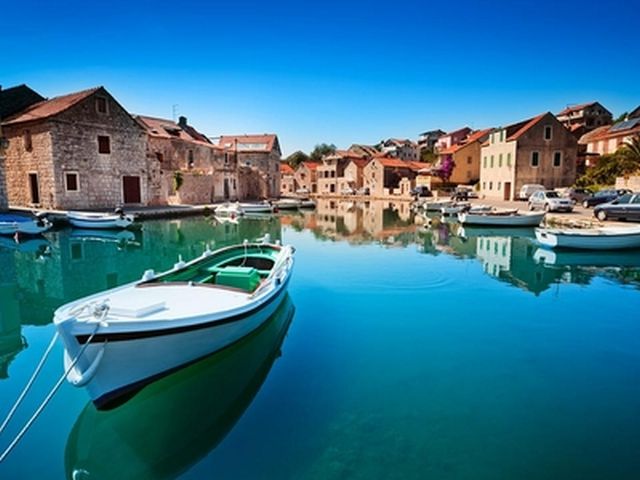
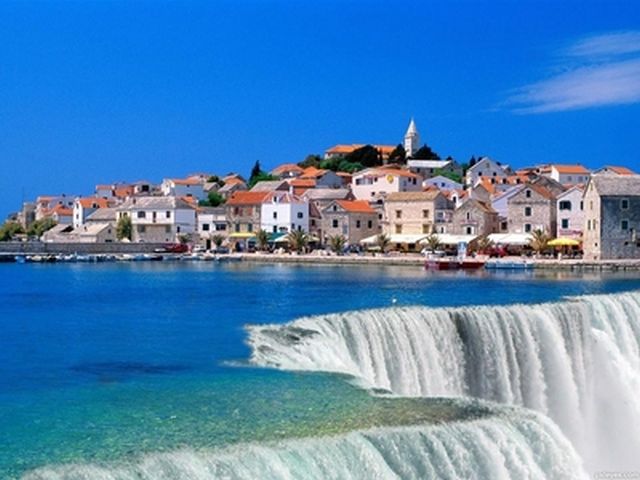
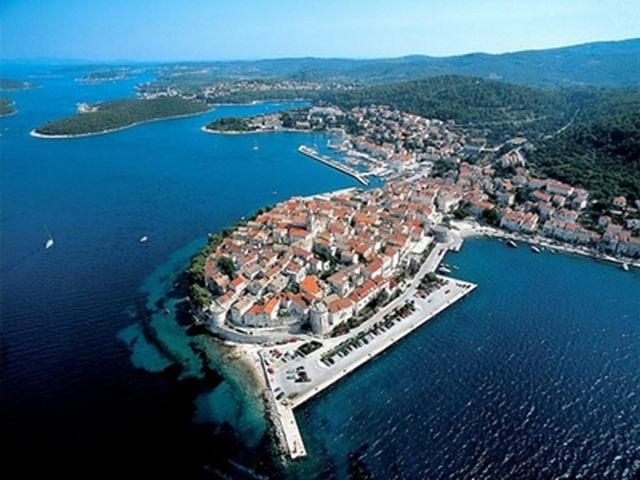
The Republic of Cyprus
Cyprus, officially the Republic of Cyprus, is an island country in the Eastern Mediterranean and the third largest and third most populous island in the Mediterranean. It is located in the south of Turkey, the west of Syria and Lebanon, the northwest of Israel and Palestine, the north of Egypt, and the southeast of Greece. The Cyprus Republic has got de jure sovereignty over the island of Cyprus, as well as its territorial sea and exclusive economic area, according to international law (except for the British Overseas Territory of Akrotiri and Dhekelia, administered as Sovereign Base Areas, 2.8% of the territory). However, the Republic of Cyprus is de facto partitioned into two main parts: the area under the effective control of the Republic, located in the south and in the west, and comprising approximately 59% of the island's area; and the north, administered by the self-declared Turkish Republic of Northern Cyprus, covering approximately 37% from the area of the island. Another nearly 4% from the area of the island is covered by the UN buffer zone. The international community considers the northern part of the island as a territory of the Republic of Cyprus occupied by Turkish forces. The occupation is viewed as illegal under international law, amounting to illegal occupation of EU territory since Cyprus became a member of the European Union. Cyprus is a major tourist destination in the Mediterranean. With an advanced, high-income economy and a very high Human Development Index, the Republic of Cyprus has been a member of the Commonwealth since 1961 and was a founding member of the Non-Aligned Movement until it joined the European Union on 1 May 2004. On the 1st of January 2008, the Republic of Cyprus joined the eurozone. Cyprus is the third largest island in the Mediterranean Sea, after the Italian islands of Sicily and Sardinia (both in terms of area and population). It is also the world's 80th largest by area and world's 51st largest by population. It measures 240 kilometres (149 mi) long from end to end and 100 kilometres (62 mi) wide at its widest point, with Turkey 75 kilometres (47 mi) to the north. It lies between latitudes 34° and 36° N, and longitudes 32° and 35° E. Other neighbouring territories include Syria and Lebanon to the east (105 and 108 kilometres (65 and 67 mi), respectively), Israel 200 kilometres (124 mi) to the southeast, Egypt 380 kilometres (236 mi) to the south, and Greece to the northwest: 280 kilometres (174 mi) to the small Dodecanesian island of Kastellorizo (Megisti), 400 kilometres (249 mi) to Rhodes and 800 kilometres (497 mi) to the Greek mainland. Sources alternatively place Cyprus in Europe, or Western Asia and the Middle East. The physical relief of the island is dominated by two mountain ranges, the Troodos Mountains and the smaller Kyrenia Range, and the central plain they encompass, the Mesaoria. The Mesaoria plain is drained by the Pedieos River, the longest on the island. The Troodos Mountains cover most of the southern and western portions of the island and account for roughly half its area. The highest point on Cyprus is Mount Olympus at 1,952 m (6,404 ft), located in the centre of the Troodos range. The narrow Kyrenia Range, extending along the northern coastline, occupies substantially less area, and elevations are lower, reaching a maximum of 1,024 m (3,360 ft). The island lies within the Anatolian Plate. Geopolitically, the island is subdivided into four main segments. The Republic of Cyprus occupies the southern two-thirds of the island (59.74%). The Turkish Republic of Northern Cyprus occupies the northern third (34.85%), and the United Nations-controlled Green Line provides a buffer zone that separates the two and covers 2.67% of the island. Lastly, two bases under British sovereignty are located on the island: Akrotiri and Dhekelia, covering the remaining 2.74%.
Filippos Yiapanis, pupil, Gymnasium Apostolou Paulou in Paphos
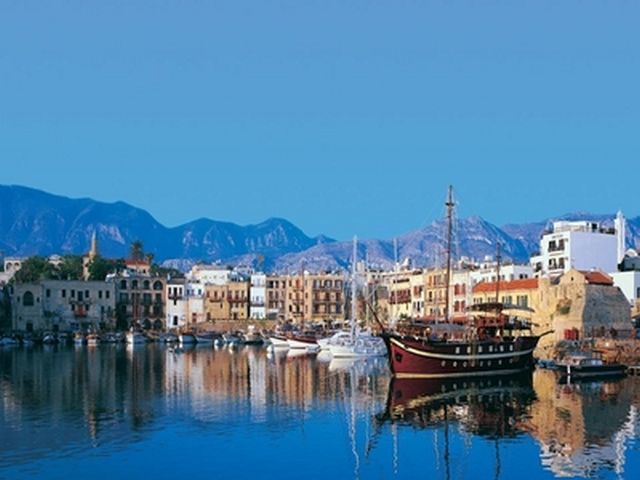
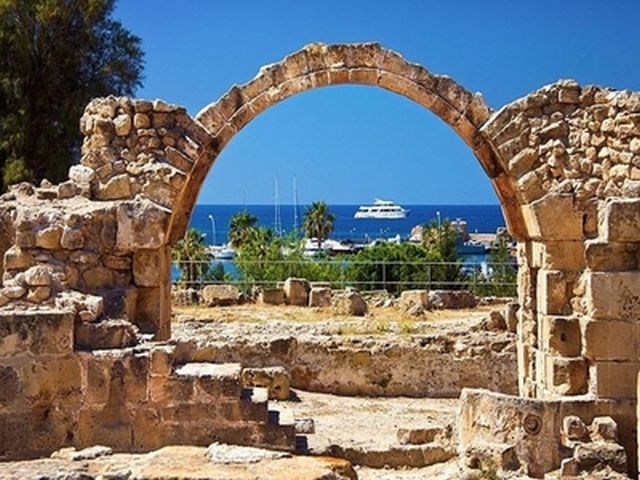
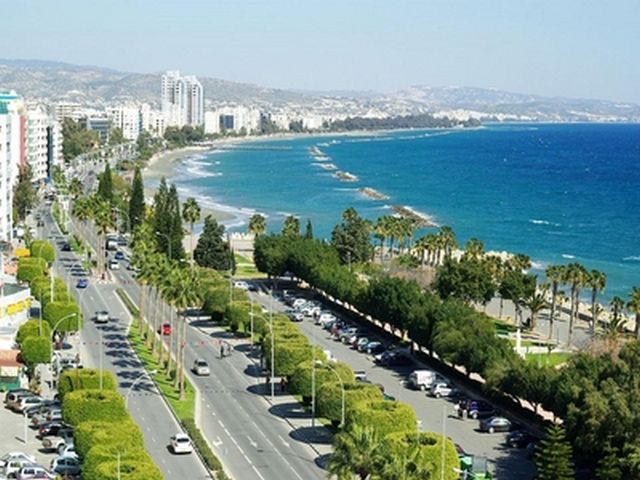
I Dimokratía tis Kýpros
Kýpros, epísima i Dimokratía tis Kýpros, eínai mia nisiotikí chóra stin Anatolikí Mesógeio kai to tríto megalýtero kai to tríto megalýtero se plithysmó nisí tis Mesogeíou. Vrísketai nótia tis Tourkías, dytiká tis Syrías kai tou Livánou, voreiodytiká tou Israíl kai tis Palaistínis, sta vóreia tis Aigýptou, kai notioanatoliká tis Elláda. I Kýpros Dimokratía échei de jure kyriarchía páno sto nisí tis Kýpros, kathós kai choriká ýdata kai tin apokleistikí oikonomikí zóni, sýmfona me to diethnés díkaio (ektós apó to vretanikó yperpóntio édafos tou Akrotiríou kai tis Dekéleias, pou chorigeítai os Periochés ton Kyríarchon Váseon, 2,8% tou édafos). Ostóso, i Kýpros eínai de facto chorisméno se dýo kýria méri: i periochí káto apó ton apotelesmatikó élencho tis Dimokratías, pou vrísketai sta nótia kai dytiká, kai perilamvánei perípou 59% tis éktasis tou nisioú? kai to vóreio, pou chorigeítai apó tin aftoanakirychtheísa Tourkikí Dimokratía tis Vóreias Kýpros, pou kalýptoun perípou to 37% tis éktasis tou nisioú. Mia álli schedón 4% tis éktasis tou nisioú kalýptetai apó ti nekrí zóni ton IE. I diethnís koinótita theoreí to vóreio tmíma tou nisioú os édafos tis Dimokratías tis Kýpros katalamvánetai apó tis tourkikés dynámeis. I katálipsi theoreítai paránomi vásei tou diethnoús dikaíou, pou anérchontai se paránomi katochí tou edáfous tis EE afoú i Kýpros égine mélos tis Evropaïkís Énosis. I Kýpros eínai énas simantikós touristikós proorismós sti Mesógeio. Me éna proigméno ypsiloú eisodímatos tis oikonomías kai éna polý ypsiló Deíkti Anthrópinis Anáptyxis, i Dimokratía tis Kýpros eínai mélos tis Koinopoliteías apó to 1961 kai ítan idrytikó mélos tou Kinímatos ton Adesméfton, méchri tin éntaxí tis stin Evropaïkí Énosi tin 1i Maḯou 2004 . tin 1i Ianouaríou 2008, i Dimokratía tis Kýpros entáchthike stin evrozóni. I Kýpros eínai to tríto megalýtero nisí sti Mesógeio Thálassa, metá apó ta italiká nisiá tis Sikelías kai tis Sardinías (tóso apó tin ápopsi tis éktasis kai tou plithysmoú). Eínai epísis i pankosmíos 80i megalýteri apó periochí kai pankosmíos 51i megalýteri apó ton plithysmó. Metrá 240 chiliómetra (149 mília) polý apó ákri se ákri kai 100 chiliómetra (62 mília) plátos sto evrýtero simeío tou, me tin Tourkía 75 chiliómetra (47 mília) sta vóreia. Vrísketai se geografikó plátos metaxý 34 ° kai 36 ° N, kai míki 32 ° kai 35 ° E. Álla geitoniká edáfi perilamvánei ti Syría kai ton Lívano pros ta anatoliká (105 kai 108 chiliómetra (65 kai 67 mi), antístoicha), to Israíl 200 chiliómetra (124 mília) sta notioanatoliká, i Aígyptos 380 chiliómetra (236 mília) sto nóto, kai tin Elláda na i voreiodytikí: 280 chiliómetra (174 mília) me to mikró tis Dodekanísou Kastellórizo (Megísti), 400 chiliómetra (249 mília) sti Ródo kai 800 chiliómetra (497 mília) me tin ellinikí ipeirotikí chóra. Pigés enallaktiká topothetíste Kýpros stin Evrópi, í ti Dytikí Asía kai ti Mési Anatolí. I fysikí anakoúfisi tou nisioú kyriarcheítai apó dýo oroseirés, ta vouná tou Troódous kai to mikrótero Kerýneias Range, kai i kentrikí pediáda pou perikleíei, i Mesaoría. I pediáda tis Mesaorías strangízetai apó ton potamó Pediaío, to megalýtero sto nisí. Ta vouná tou Troódous kalýptoun to megalýtero méros ton nótion kai dytikón tmimáton tou nisioú kai efthýnontai gia perípou to ímisy periochí. To ypsilótero simeío stin Kýpros eínai Ólympo sta 1.952 m (6.404 ft), pou vrísketai sto kéntro tis oroseirás tou Troódous. To stenó Kerýneias Range, pou ekteínetai katá míkos tis vóreias aktís, katalamvánei simantiká ligótero chóro, kai afxíseis eínai chamilóteres, fthánontas sto mégisto ton 1.024 m (3.360 ft). To nisí vrísketai mésa stin pláka tis Anatolías. Geopolitiká, to nisí ypodiaireítai se téssera kýria tmímata. I Kýpros katalamvánei ta nótia dýo tríta tou nisioú (59,74%). I Tourkikí Dimokratía tis Vóreias Kýpros katalamvánei to vóreio tríto (34,85%), kai ta Inoména Éthni elenchómeni Prásinis Grammís paréchei mia oudéteri zóni pou chorízei tis dýo kai kalýptei 2,67% tou nisioú. Télos, oi dýo váseis káto apó Vretanikí kyriarchía vrískontai sto nisí: Akrotíri kai ti Dekéleia, pou kalýptoun to ypóloipo 2,74%.
Anna Kouta, μαθητής, Gymnasium Apostolou Paulou in Paphos
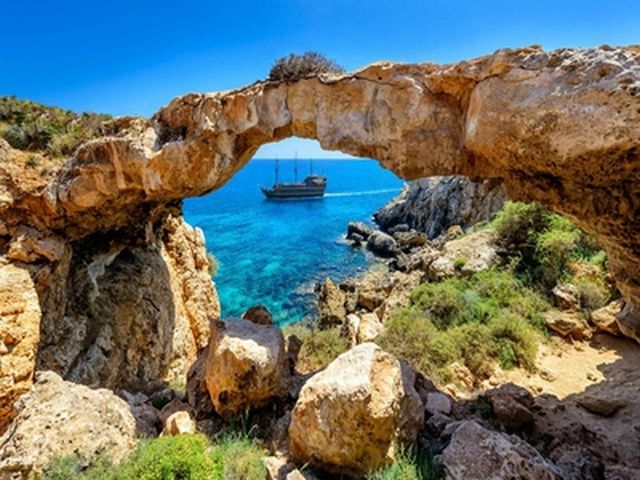
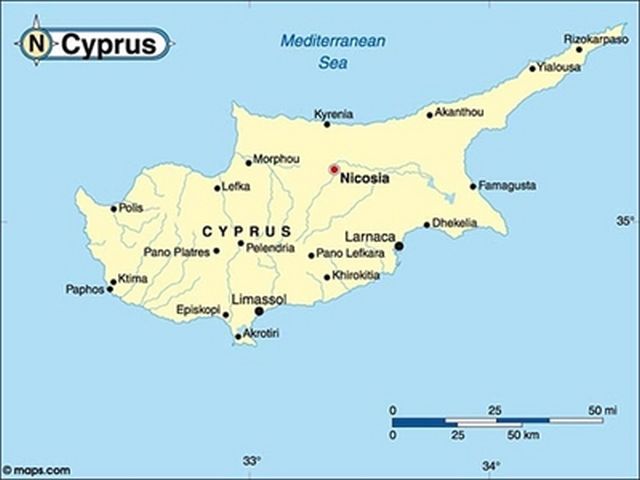
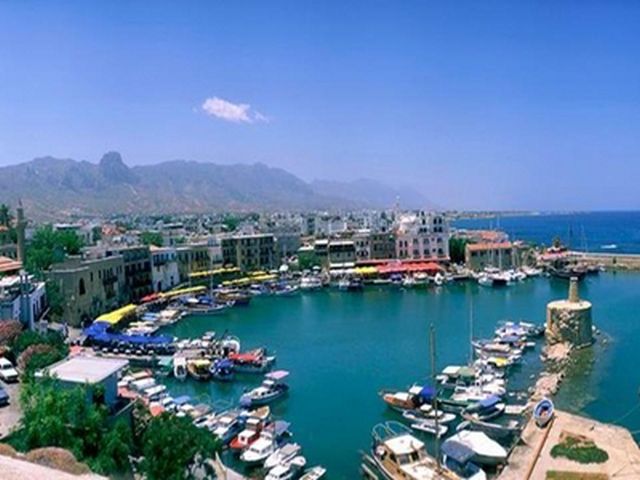
The Republic of Lithuania
The Republic of Lithuania is situated in Europe, on the south-east coast of the Baltic Sea. It is bordered by the next countries: Latvia (border length - 588 km, sea border - 22 km), Belarus (border length - 677 km) and Poland (border length - 104 km) and Russia (Kaliningrad region; land border length - 255 km Curonian Spit - 18 km, sea - 22 km). Baltic Sea coast length - 90.66 km. Lithuania - Belarus and Lithuania - the Russian Federation and the wall is the European Union's borders. Lithuanian economic zone in the Baltic Sea (in the west) aims at the Swedish economic area. In the 14 century, Lithuania was the largest country in Europe: In the current territory of Belarus and Ukraine, and parts of Poland and Russia. 1569. Through the Union of Lublin, Poland with Lithuania formed the new state - the Republic of Two Nations, which lasted more than 200 years before the neighboring countries in 1795. Finally it shared its territory. Lithuania restored its independence in 1918, on February 16, but in 1940, at the start of the II World War, it was occupied by the Soviet Union, and later - Hitler's Germany. Germany losing the war, Lithuania was occupied by the Soviet Union for the second time. 1990. On 11 March, Lithuania declared the restoration of full sovereignty. Lithuania belongs to a very high development category of countries. Lublin present Lithuanian territory of the first inhabitants rose up against the 11-13 thousand years. According to the Lithuanian prehistory researcher Maria Gimbutas, it was the Jutland peninsula and the current Polish territory came hunters and fishermen, who are brought together, and two late Paleolithic cultures. The first inhabitants were nomadic and did not create permanent settlements. During World War II, until 1915 it was the end of the German Empire occupied the whole of Lithuania current territory. In 1915 it suffered defeat, as the Russian imperial army began to retreat from Lithuania and started the evacuation of the Russian Empire depth. About 300 thousand, Lithuanian residents have moved together with the army or have been forcibly expelled. Refugees in large colonies in Russia in various areas, mainly in Voronezh, Tambov, Yaroslavl, Petrograd, Maskvoje.1917 m., Lithuania, the Council requested the German Empire, to recognize Lithuanian independence. 1917. 11 December. It signed the declaration of independence act, which provided a close-knit Lithuanian-German alliance, but it raised the indignation of the population. 1944. July-October. USSR occupied Lithuania for the second time. Lithuania began mass deportations to Siberia, which was carried out by Stalin (1953). Mirties.Šiuo period of national prohibition of symbols - the flag and the National Song and others, for their use of people were persecuted. Lithuanian economic recovery under the pretext of the Moscow authorities to the workers and the rest of the population migration to Lithuania; This was intended to better integrate Lithuania into the Soviet Union and the development of the industry. At the same time, Lithuanian-bodied people were lured to Russia works underneath, promising a new place every installation preferences. Even suppress the guerrilla resistance to the Soviet government succeeded in silencing the movement for the independence of Lithuania - the persecuted underground dissident group allowed underground press, Catholic literature. Following an international conference in the Finnish capital, where he was recognized after the Second World War established the border, Lithuania created the Helsinki group through foreign radio announced the independence requirement. 1972. Romas Kalanta had a few days' unrest in Kaunas. 1986. The Soviet Union began the openness (glasnost) Policy, 1988. Lithuania Lithuanian Reform Movement was formed, and soon started to pursue the country's independence.
Steponas Mikalauskas, pupil, President Valdas Adamkus gymnasium Kaunas
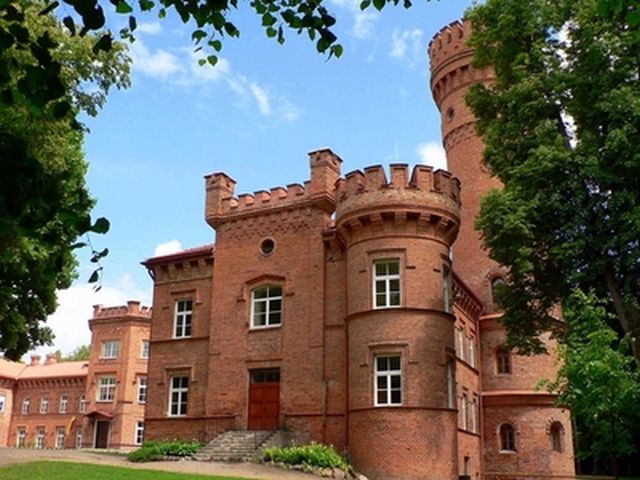
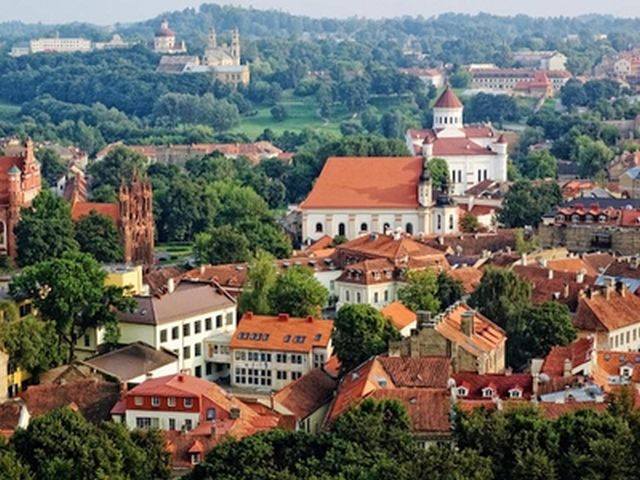
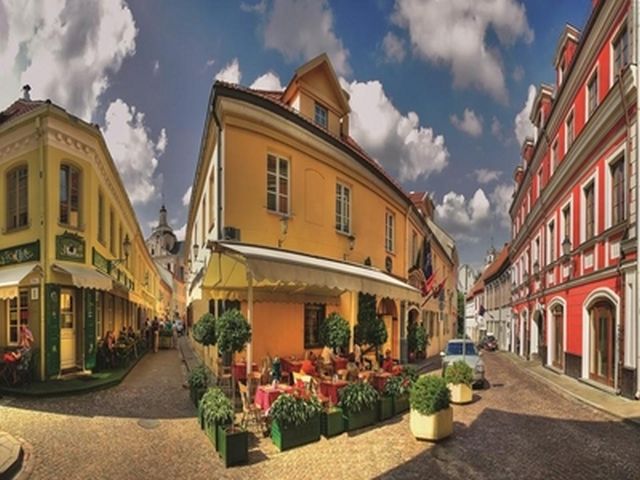
Lietuvos Respublika
Lietuvos Respublika valstybė Europoje, Baltijos jūros pietrytinėje pakrantėje. Ribojasi su šiomis valstybėmis: Latvija (sausumos sienos ilgis – 588 km, jūros siena – 22 km), Baltarusija (sienos ilgis – 677 km), Lenkija (sienos ilgis – 104 km), Rusija (Kaliningrado sritis; sausumos sienos ilgis – 255 km, Kuršių mariomis – 18 km, jūra – 22 km). Baltijos jūros pakrantės ilgis – 90,66 km. Lietuvos – Baltarusijos ir Lietuvos – Rusijos Federacijos siena yra ir Europos Sąjungos siena. Lietuvos ekonominė zona Baltijos jūroje (vakaruose) siekia Švedijos ekonominę zoną. į XIV a Lietuva buvo didžiausia valstybė Europoje: į ją įėjo dabartinė Baltarusijos ir Ukrainos teritorija, dalis Lenkijos ir Rusijos. 1569 m. Liublino unija Lietuva susijungė su Lenkija ir suformavo naują valstybę – Abiejų Tautų Respubliką, kuri gyvavo daugiau kaip 200 metų, kol kaimyninės šalys 1795 m. galutinai pasidalijo jos teritoriją. Lietuva atkūrė nepriklausomybę 1918 m. vasario 16 d., tačiau 1940 m., Antrojo Pasaulinio karo pradžioje, buvo okupuota TSRS, o vėliau – hitlerinės Vokietijos. Vokietijai karą pralaimint, Lietuvą antrą kartą okupavo TSRS. 1990 m. kovo 11 d. Lietuva paskelbė atkurianti visišką valstybės suverenitetą. Lietuva priklauso itin aukšto išsivystymo valstybių kategorijai. Į dabartinę Lietuvos teritoriją pirmieji gyventojai atsikėlė prieš 11-13 tūkstančių metų. Anot Lietuvos priešistorės tyrinėtojos Marijos Gimbutienės, tai buvo iš Jutlandijos pusiasalio ir dabartinės Lenkijos teritorijos atėję medžiotojai bei žvejai, kurie kartu atsinešė ir dvi vėlyvojo paleolito kultūras. Pirmieji gyventojai buvo klajokliai ir nuolatinių gyvenviečių nekūrė. Prasidėjus Pirmajam pasauliniam karui, iki 1915 m. pabaigos Vokietijos imperija užėmė visą dabartinę Lietuvos teritoriją bei Kuršą. 1915 m. patyrusi pralaimėjimą, Rusijos imperijos kariuomenė pradėjo trauktis iš Lietuvos. Pradėta evakuacija į Rusijos imperijos gilumą. Apie 300 tūkst. Lietuvos gyventojų patys pasitraukė drauge su kariuomene arba buvo jos prievarta išvaryti. Pabėgėliai lietuviai didelėmis kolonijomis įsikūrė įvairiose Rusijos vietovėse, daugiausia Voroneže, Tambove, Jaroslavlyje, Petrograde, Maskvoje.1917 m., Lietuvos Taryba prašė Vokietijos imperijos, kad ji pripažintų Lietuvos nepriklausomybę. 1917 m. gruodžio 11 d. buvo pasirašytas nepriklausomybės paskelbimo aktas, kuriame buvo numatyta glaudi Lietuvos ir Vokietijos sąjunga, bet ji kėlė gyventojų pasipiktinimą. 1944 m. liepos-spalio mėn. TSRS užėmė Lietuvą antrą kartą. Prasidėjo Lietuvos masinės gyventojų deportacijos į Sibirą, kurios buvo vykdomos iki Stalino (1953 m.) mirties.Šiuo laikotarpiu uždrausti tautiškumo simboliai - tautinė vėliava bei Tautiška Giesmė ir kiti, už jų naudojimą žmonės buvo persekiojami. Lietuvos ūkio atkūrimo pretekstu Maskvos valdžia skatino darbininkų ir kitų gyventojų migraciją į Lietuvą; taip buvo ketinama labiau integruoti Lietuvą į Sovietų Sąjungą ir plėtoti pramonę. Tuo pačiu metu Lietuvos darbingi gyventojai buvo viliojami darbams Rusijos TFSR gilumoje, žadant visokeriopas įsikūrimo naujoje vietoje lengvatas. Net ir nuslopinus partizaninį pasipriešinimą sovietinė valdžia neužgniaužė judėjimo už Lietuvos nepriklausomybę - veikė persekiojamos pogrindinės disidentinės grupės, leidusios pogrindinę spaudą, katalikišką literatūrą. Po tarptautinės konferencijos Suomijos sostinėje, kur buvo pripažintos po II pasaulinio karo nusistovėję sienos, Lietuvoje susikūrusi Helsinkio grupė per užsienio radiją paskelbė nepriklausomybės reikalavimą. 1972 m. po Romo Kalantos susideginimo kilo kelias dienas trukę neramumai Kaune. 1986 m. Tarybų Sąjungoje prasidėjus viešumo (glasnost) politikai, 1988 m. Lietuvoje susikūrė Lietuvos Persitvarkymo Sąjūdis, netrukus ėmęs siekti šalies nepriklausomybės.
Gabija Šinkevičiūtė, mokinys, President Valdas Adamkus gymnasium Kaunas
